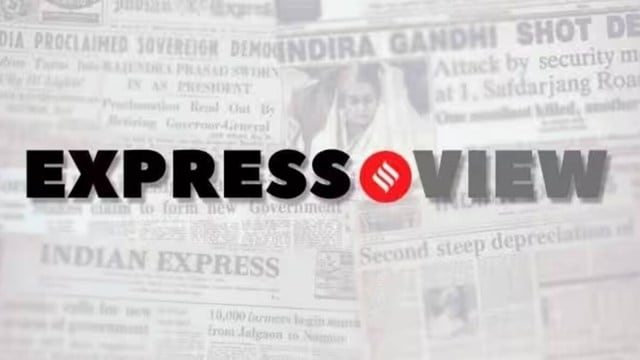
The announcement by the Election Commission of the poll schedule in Bihar inaugurates the second big political face-off in a year that began with the contest in Delhi, which the BJP won. For the BJP, the victory in Delhi, and in Maharashtra and Haryana before it, had helped change the subject from the below-majority dip in its tally in the 2024 Lok Sabha polls. A win in Bihar, come November, could be crucial to revitalising the ruling coalition, showing signs of sag and wear and tear in its third term. On the other side, the Congress-led Opposition — in Bihar, Congress plays second fiddle to the RJD — is desperately searching for validation from the ground after its campaign touched a heightened pitch. Congress’s “vote chori” allegations accuse the EC of conspiring with the BJP to steal elections — they also raise a serious, even chilling, question: In case of a close result on November 14, will the losing side gracefully accept defeat, or will it not? Ahead of this election, the Special Intensive Revision of the electoral rolls in the state also kicked up a maelstrom of anxieties. Those have hopefully been calmed by the final voter numbers, which show no mass disenfranchisement, nor indeed any large-scale foreigner incursion.
But this November election in Bihar will be important not just for its signals for national politics. For many years, Bihar, the fertile ground for political ideas that became movements that resonated beyond it — be it the JP-led upsurge against corruption in the 1970s or the rise of the Mandalite parties under the banner of social justice in the 1990s — has seemed caught in a prolonged standstill. Lalu Prasad upended the entrenched caste equations in a state of great inequalities. Nitish Kumar took the caste-centric agenda of social justice from his rival (who was to later turn friend, and then rival again) and layered it with a much-needed agenda of governance. Twenty years after Nitish took charge, however, all the low hanging fruit have been plucked, many of the changes have been routinised. Today, Bihar is back to waiting — for a leadership that can address the many arduous challenges that remain. In 2007, the Nitish government’s Mukhyamantri Balika Cycle Yojana had seemed transformative — reaching into darkened areas untouched by the state, helping bring down the dropout rates for girls in schools. In 2025, his announcement of financial assistance of Rs 10,000 each to women under the Mukhyamantri Rojgar Yojana may shore up electoral support for him — or be seen as just another cash transfer scheme in times when such schemes are increasingly an easy handout for governments.
This election will also see a third voice and a new message make itself seen and heard in Bihar. Prashant Kishor’s Jan Suraaj Party is appealing to the voter to disregard caste calculations, and make a choice with an eye on their children’s future. In a state that cannot seem to hold back its young, from where they continue to flee in large numbers in search of opportunities, that message could make a dent, or not. The new party’s fortunes will be shaped by the interplay, among others, of the levels of cynicism, aspirations for change and calculations of winnability by a politically vibrant people caught in a long political plateau. What Bihar decides — and how — will shape politics in the next year and beyond.